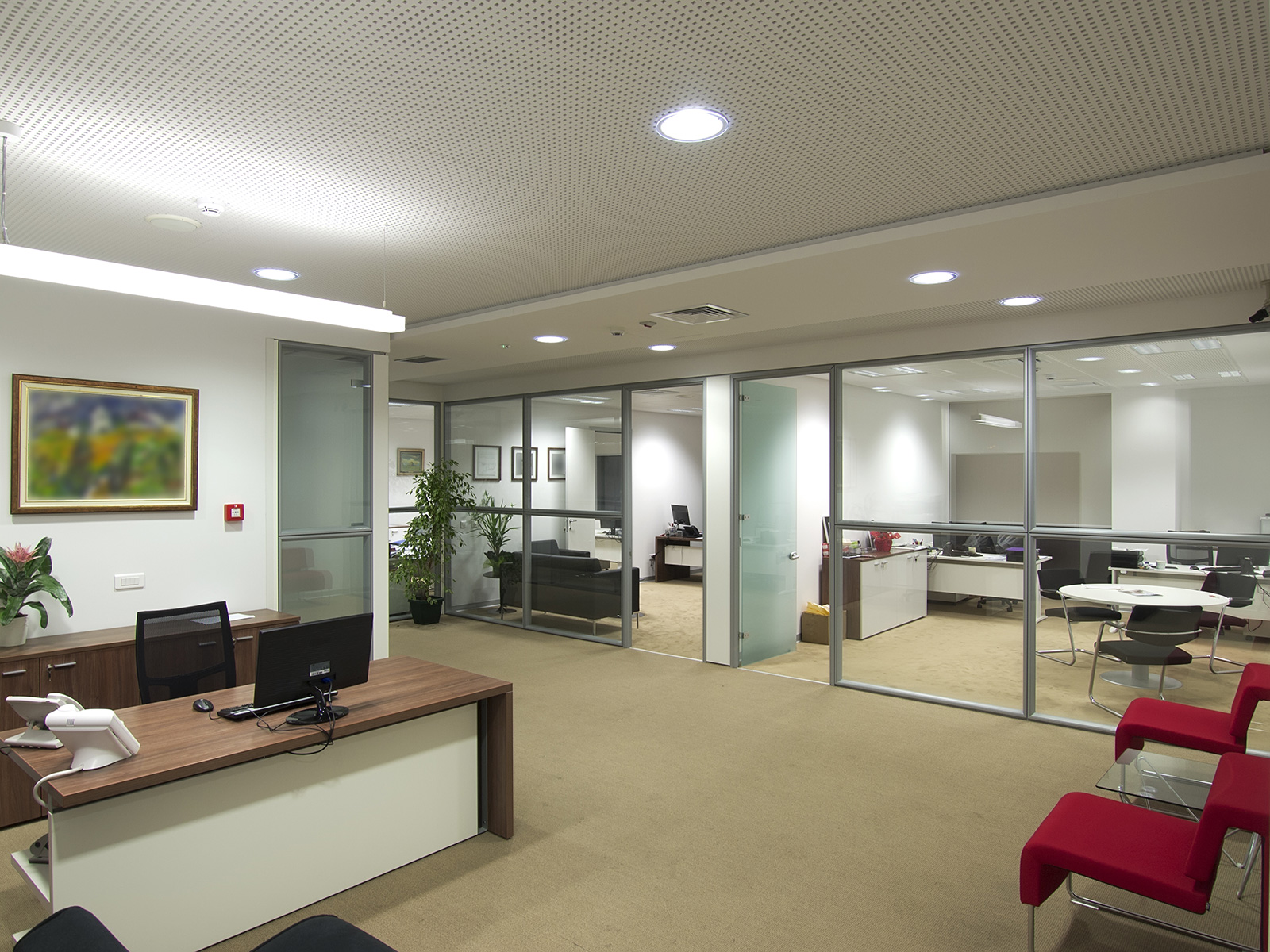Office partitioning refers to the creation of separate and distinct areas within an office space using various physical barriers or dividers. The primary purpose of office partitioning is to divide a larger workspace into smaller sections, providing structure, privacy, and organisation. This can be especially important in open-plan office layouts where multiple employees work in a shared environment. Office partitioning can take several forms, each serving different purposes:
Fixed Partitions
Fixed partitions are permanent walls or structures that are built to separate different areas of an office. These partitions are typically made of materials such as drywall, glass, or other solid materials. They provide a high level of privacy and can be customised to match the overall aesthetic of the office.
Movable Partitions
Movable partitions, also known as modular or demountable partitions, are flexible and can be reconfigured or moved as needed. These partitions are often made of lightweight materials, such as panels or screens, and are mounted on tracks or casters. Movable partitions offer versatility, allowing the office layout to adapt to changing needs.
Glass Partitions
Glass partitions are transparent or semi-transparent dividers made of glass panels. They are popular for creating separate workspaces while maintaining a sense of openness and visibility. Glass partitions are often used to enhance natural light distribution and promote a more collaborative atmosphere.
Cubicles
Cubicles are a type of office partition that typically includes desk space, storage, and partial walls to provide employees with individual workspaces. Cubicles are often used in open-plan offices to offer a degree of privacy while still maintaining a sense of collaboration.

Fabric Partitions
Fabric partitions are made of materials like fabric-covered panels or curtains. These partitions are commonly used to soften the acoustics within a space and provide a cost-effective solution for dividing areas without the need for permanent walls.
Desk Screens
Desk screens are smaller partitions attached to desks or workstations to create a visual barrier between individual workspaces. They are often used to reduce distractions and enhance privacy for employees.
The choice of office partitioning depends on factors such as the desired level of privacy, aesthetic preferences, budget constraints, and the need for flexibility in office layout. Well-designed office partitioning can contribute to a more functional and comfortable work environment, accommodating the diverse needs of employees within a shared workspace.

